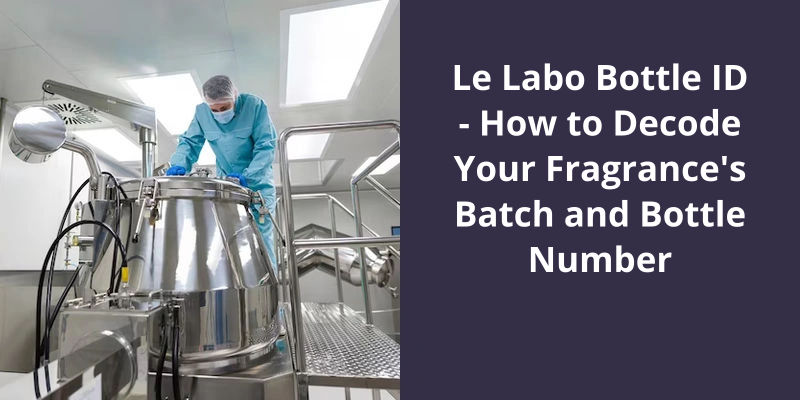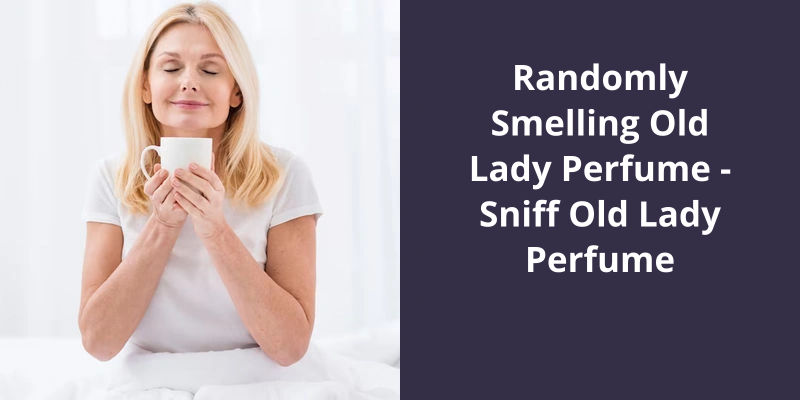Tween 20 in perfume is a type of surfactant, which means it makes it easier for different substances to mix together. It’s a popular ingredient in perfumes because it helps blend and stabilize the essential oils and water in the mixture. This allows the perfume to keep a uniform consistency and smell. Besides, it prevents the oils from separating out. Tween 20 also can reduce the surface tension of liquids, making it easier to spray the perfume. So essentially, by using Tween 20, the perfume ingredients blend well, maintaining an even scent and making the perfume more user-friendly.

What Was the Purpose of Adding Tween 20 to Our Wash Solutions Etc?
Tween® 20 is a nonionic detergent and a commonly used blocking reagent in immunological assays and other protein-based experiments. The addition of Tween® 20 to wash solutions enhances the solubilization of hydrophobic substances and helps to reduce the tendency of proteins to stick to surfaces. This is important because non-specific binding can result in high background signals, false positives and inaccurate results. By using Tween® 20, researchers can effectively wash away unbound or non-specifically bound protein, reducing the likelihood of false positive results.
In addition to reducing non-specific background staining, Tween® 20 also has the ability to aid in the dispersion of biological substances in solution. This enhances the stability of the proteins and reduces their tendency to aggregate or clump together, making them easier to handle and analyze.
This is especially important in cases where the detection method relies on antibodies or other detection molecules that may bind to the surface in the absence of specific binding targets. By blocking these sites, researchers can ensure that only specific binding events are being detected, reducing the likelihood of false positives. This is particularly important in immunoassays where high specificity is required.
It’s a widely used reagent that’s essential for many immunological assays, Western blotting, ELISA tests, and other protein-based experiments. Without it, researchers would be unable to obtain accurate and reliable results, greatly impacting the field of biological research.
Now that we’ve a basic understanding of what Tween 20 is and how it works as a solubilizer and emulsifier, let’s explore it’s specific use in perfume production.
What Is Tween 20 Used for in Perfume?
Perfume is a mixture of various fragrant essential oils and aroma compounds, solvents and fixatives. It’s a complex mixture of molecules that need to be blended well to ensure they keep their fragrance, without breaking down or separating over time. It’s for this reason that Tween 20, also known as Polysorbate 20, is used in perfumery.
Tween 20 is a PEG-20 sorbitan monolaurate that’s used as a solubilizer and emulsifier in cosmetic products. It’s a non-ionic surfactant, which means that it doesn’t form ions or dissociate in water, making it useful in various applications. As an emulsifier, it forms a stable bond between the oil and water components of a perfume, ensuring that the fragrance is evenly distributed throughout the product.
Using Tween 20 in perfumery allows the fragrance compounds and other ingredients to be blended smoothly, leading to a homogenous solution, without any separation. It also helps in reducing the surface tension of the fragrance mix, making it easier to blend and spray.
In these products, it serves as a surfactant, helping to form a stable emulsion between the oil and water-based components of the product. As a surfactant, it lowers the surface tension of the solution, making the product more easily spreadable.
It’s ability to bond oil and water mixtures, stabilize emulsions, and reduce surface tension, makes it a popular ingredient in producing consistent and high-quality products. As a non-ionic surfactant, it’s gentle on the skin, making it safe for use in cosmetic applications.
Now that we’ve covered some of the basic properties of Tween 20, you might be wondering why it’s called that in the first place. Well, the name actually comes from the fact that the emulsifier is a polysorbate with a specific number of repeat polyethylene glycol units in it’s molecular structure. In this article, we’ll explore more of the fascinating properties and uses of Tween 20, as well as it’s potential benefits and drawbacks.
Why Is It Called Tween 20?
The Tween part of the name comes from the fact that the molecule contains a mixture of hydrophilic (water loving) and lipophilic (oil loving) segments, giving it the ability to act as both a hydrophilic and a lipophilic surfactant. This makes Tween 20 a versatile emulsifier and solubilizing agent that finds applications in a wide range of industries, including pharmaceuticals, cosmetics, food, and textiles.
Another important property of Tween 20 is it’s solubilizing power. Due to it’s hydrophilic and lipophilic segments, it can dissolve a wide range of hydrophobic compounds, including essential oils and fragrances, in water-based systems. This makes it a popular ingredient in cosmetics and personal care products, such as shampoos, conditioners, and lotions, as well as in cleaning products, where it helps to solubilize grease and oil.
It’s name is derived from the number of repeat polyethylene glycol units in it’s molecule, which give it it’s unique properties as a hydrophilic and lipophilic surfactant. It’s ability to form stable emulsions, solubilize hydrophobes, and provide gentle cleansing make it a popular ingredient in food, personal care, and cleaning products.
Chemical Composition and Structure of Tween 20: How Are the Hydrophilic and Lipophilic Segments Arranged in the Molecule?
This article explores the chemical composition and structure of Tween 20. It looks at the arrangement of the hydrophilic and lipophilic segments within the molecule.
Source: Tween-20, Polysorbate 20 Emulsifier – IRO Group Inc.
Understanding the differences between the Tween family detergents can be crucial in determining the right detergent for a specific research application. In this article, we will delve into the details of Tween 20 and Tween 80 and explore their properties and functionalities.
What Is the Difference Between Tween 80 and Tween 20?
The difference between these two detergents lies primarily in their chemical composition and resultant physical properties. Oleic acid, present in Tween 80, makes it a better emulsifier than Tween In contrast, Tween 20 has a lower HLB value, indicating that it’s better suited for solubilizing hydrophobic substances.
Tween 80 is known for it’s strong solubilizing and defending properties, making it an effective surfactant for dispersing oils and other organic substances in aqueous solutions. The presence of the unsaturated fatty acid at the center of it’s structure enables it to penetrate the lipid bilayer and breakdown the outer membranes of cells, making it a commonly used component in cell lysis buffers and virus inactivation protocols.
On the other hand, Tween 20 is a strong detergent that’s known for it’s excellent emulsifying properties. It’s preferred over Tween 80 for forming transparent, stable emulsions of oils and water. It’s lower HLB value makes it a better candidate for solubilizing relatively hydrophobic molecules, such as certain peptides and proteins. Furthermore, it’s minimally toxic and non-irritating to cells and tissues, making it a safer alternative for biological and medical applications.
In addition to their individual characteristics, the selection of Tween 20 or Tween 80 is also influenced by the specific application, concentration, and experimental conditions. For instance, Tween 80 has been shown to interfere with the activity of certain enzymes, while Tween 20 has been shown to cause aggregation of some proteins at high concentrations.
The Role of HLB (Hydrophilic-Lipophilic Balance) Value in Determining the Suitability of Tween 80 and Tween 20 for Different Applications
The HLB (Hydrophilic-Lipophilic Balance) value helps determine whether Tween 80 or Tween 20 is suitable for specific applications. The HLB value relates to the water-soluble and oil-soluble properties of the surfactant, which can influence it’s effectiveness in a given application.
It’s clear that Tween 80 has a range of applications within various industries, but what about it’s potential as a replacement for Tween 20? Many may wonder if these two substances can be used interchangeably. Let’s take a closer look at the differences and similarities between Tween 80 and Tween 20.
Can Tween 80 Be Used Instead of Tween 20?
In many ways, Tween 80 is a great alternative to Tween For example, Tween 80 can be used as a wetting agent in the food industry, offering superior emulsifying results and stability compared to Tween Additionally, Tween 80 has been found to be more effective at controlling and preventing microbial growth compared to Tween 20.
When it comes to using Tween 80 in the pharmaceutical industry, it’s important to note that it can be used as an excipient for a variety of applications. Excipients are substances that are added to a drug to help it achieve a desired consistency, stability, or other quality. These systems help to stabilize suspensions and emulsions, making them easier to administer and improving their shelf-life.
Conclusion
In conclusion, it’s clear that polysorbate 20, also called Tween 20, is a versatile ingredient with many uses in both cosmetics and skin care products. As an emulsifier, surfactant, fragrance dispersant and stabiliser, it plays an essential role in ensuring that these products work effectively and as intended. While it may not be the most widely known ingredient, it’s impact on the quality and performance of perfumes and other similar products can’t be overstated.





